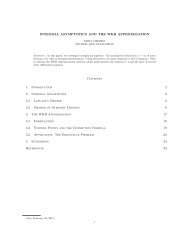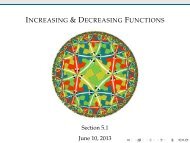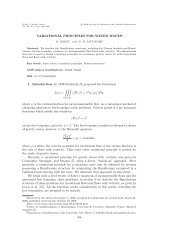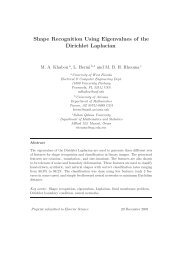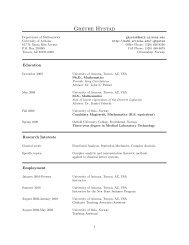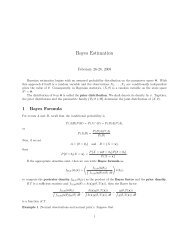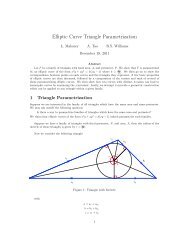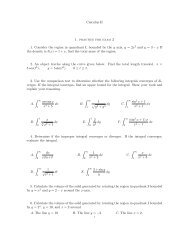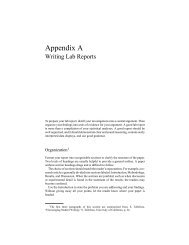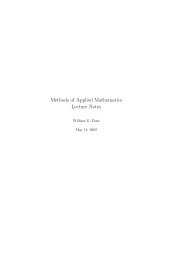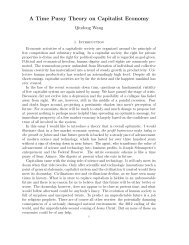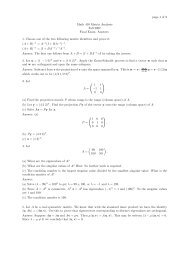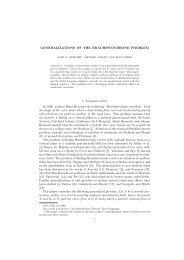Lectures on Elementary Probability
Lectures on Elementary Probability
Lectures on Elementary Probability
You also want an ePaper? Increase the reach of your titles
YUMPU automatically turns print PDFs into web optimized ePapers that Google loves.
Chapter 3<br />
Discrete Random Variables<br />
3.1 Mean<br />
A discrete random variable X is a functi<strong>on</strong> from the sample space S that has<br />
a finite or countable infinite number of real numerical values. For a discrete<br />
random variable each event X = x has a probability P [X = x]. This functi<strong>on</strong><br />
of x is called the probability mass functi<strong>on</strong> of the random variable X.<br />
The mean or expectati<strong>on</strong> of X is<br />
µ X = E[X] = ∑ x<br />
xP [X = x], (3.1)<br />
where the sum is over the values of X.<br />
One special case of a discrete random variable is a random variable whose<br />
values are natural numbers. Sometimes for technical purposes the following<br />
theorem is useful. It expresses the expectati<strong>on</strong> in terms of a sum of probabilities.<br />
Theorem 3.1 Let Y be a random variable whose values are natural numbers.<br />
Then<br />
∞∑<br />
E[Y ] = P [Y ≥ j]. (3.2)<br />
Proof: We have<br />
∞∑<br />
∞∑<br />
E[Y ] = kP [Y = k] =<br />
k=1<br />
On the other hand,<br />
j=1<br />
k=1 j=1<br />
k∑<br />
∞∑ ∞∑<br />
P [Y = k] = P [Y = k]. (3.3)<br />
j=1 k=j<br />
∞∑<br />
P [Y = k] = P [Y ≥ j]. (3.4)<br />
k=j<br />
Note that if X is a discrete random variable, and g is a functi<strong>on</strong> defined for<br />
the values of X and with real values, then g(X) is also a random variable.<br />
17



